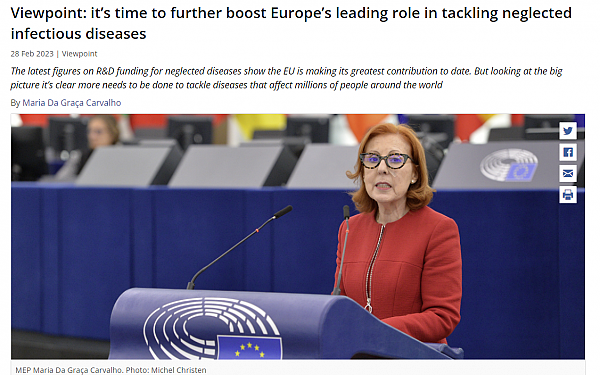Press Viewpoint: it’s time to further boost Europe’s leading role in tackling neglected infectious diseases
The latest figures on R&D funding for neglected diseases show the EU is making its greatest contribution to date. But looking at the big picture it’s clear more needs to be done to tackle diseases that affect millions of people around the world.
Around two billion people - roughly four times the population of the EU - continue to need treatment for poverty-related and neglected diseases, such as malaria, trachoma and leprosy.
They may be regarded as diseases of the past but, in reality, they continue to affect large numbers of people. They still feature on the EU’s agenda, with the recently published Global Health Strategy acknowledging the heavy burden these diseases pose on many countries.
The EU hit its highest level of funding for basic research and product development in 2021, according to the latest data from Policy Cures Research. While this is to be celebrated, it equates to only 5% of total funding globally; a reminder that we have some way to go in terms of matching our words with actions.
Sleeping sickness, one of the diseases in the World Health Organisation's list of 20 neglected tropical diseases, is caused by a parasite spread via the bites of an infected Tsetse fly. Left untreated, sleeping sickness is usually fatal, and the only treatment available for decades is an arsenic derivative that of itself kills 1 in 20 patients.
The Drugs for Neglected Diseases initiative, a not-for-profit product development partnership, is changing the game, with the long overdue elimination of sleeping sickness now seeming increasingly feasible.
But at the same time, there are around 200 million cases of malaria each year, and the first-ever vaccine, which took over thirty years to develop, has only partial efficacy, while other neglected diseases still do not have an effective point-of-care diagnostic, including Hansen's disease (formerly called leprosy) and helminth infections, risking rising drug resistance.
Despite the high number of people affected and the severe societal and economic impact of these diseases, there are limited commercial incentives to develop new ways of preventing and treating them. Combined private sector investment in this area in 2021 accounted for only 15% of total investment. Since 2011, the overall global funding for research to develop new tools including diagnostics, vaccines and therapeutics has been largely stagnant, at around €3.5 billion per year of combined public and private money, despite the uphill battle we face because of converging crises, including the rollback caused by the COVID-19 pandemic.
In short, there remains a stark mismatch between the research needs of these diseases and the amount of funding they receive.
Clique aqui para ler o artigo completo no site da Science | Business.
